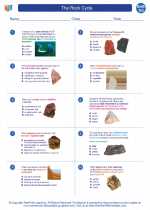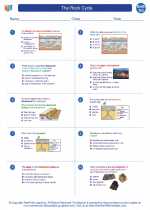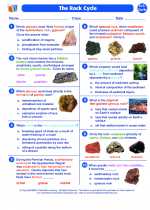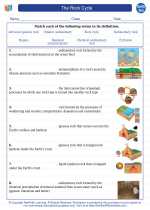Crystal Structure
The crystal structure of a mineral refers to the arrangement of atoms, ions, or molecules in a crystalline material. Understanding the crystal structure is essential in Earth Science as it provides insight into the physical and chemical properties of minerals. Here is a study guide to help you understand crystal structures:
What is a Crystal?
A crystal is a solid material whose atoms or molecules are arranged in a highly ordered, repeating pattern extending in all three spatial dimensions. This regular arrangement gives crystals their characteristic geometric shapes and properties.
Types of Crystal Structures
There are several types of crystal structures, including:
- Atomic Crystal Structure: In this type of crystal structure, atoms are arranged in a regular, repeating pattern. This is common in metallic and covalent solids.
- Ionic Crystal Structure: Ionic crystals are composed of positive and negative ions arranged in a specific repeating pattern, such as in halite (NaCl) or calcite (CaCO3).
- Molecular Crystal Structure: In molecular crystals, molecules are held together by intermolecular forces in a repeating pattern. Examples include ice (H2O) and quartz (SiO2).
Crystal Lattices
A crystal lattice is the three-dimensional geometric arrangement of the atoms, ions, or molecules within a crystal. Common types of crystal lattices include cubic, tetragonal, orthorhombic, hexagonal, and monoclinic. These lattices dictate the overall shape and physical properties of the crystal.
Crystal Systems
Crystals are classified into seven crystal systems based on their symmetry and unit cell parameters. These crystal systems are cubic, tetragonal, orthorhombic, hexagonal, trigonal, monoclinic, and triclinic. Each system has specific characteristics that determine the symmetry and angles within the crystal.
Importance of Crystal Structure
The crystal structure of a mineral influences its properties, including cleavage, hardness, density, and optical behavior. By understanding the crystal structure, scientists can predict and explain the physical and chemical behaviors of minerals, aiding in their identification and classification.
Studying Crystal Structures
To understand crystal structures, it is important to learn about unit cells, coordination number, and packing arrangements. Additionally, using X-ray diffraction and electron microscopy can provide detailed insights into the atomic arrangement within a crystal. Practice identifying different crystal systems and their characteristics to deepen your understanding.
By mastering crystal structures, you can gain a deeper appreciation for the diversity and complexity of minerals and their role in Earth Science.
.◂Earth Science Worksheets and Study Guides High School. The Rock Cycle

 Worksheet/Answer key
Worksheet/Answer key
 Worksheet/Answer key
Worksheet/Answer key
 Worksheet/Answer key
Worksheet/Answer key
 Vocabulary/Answer key
Vocabulary/Answer key
 Vocabulary/Answer key
Vocabulary/Answer key
 Vocabulary/Answer key
Vocabulary/Answer key
